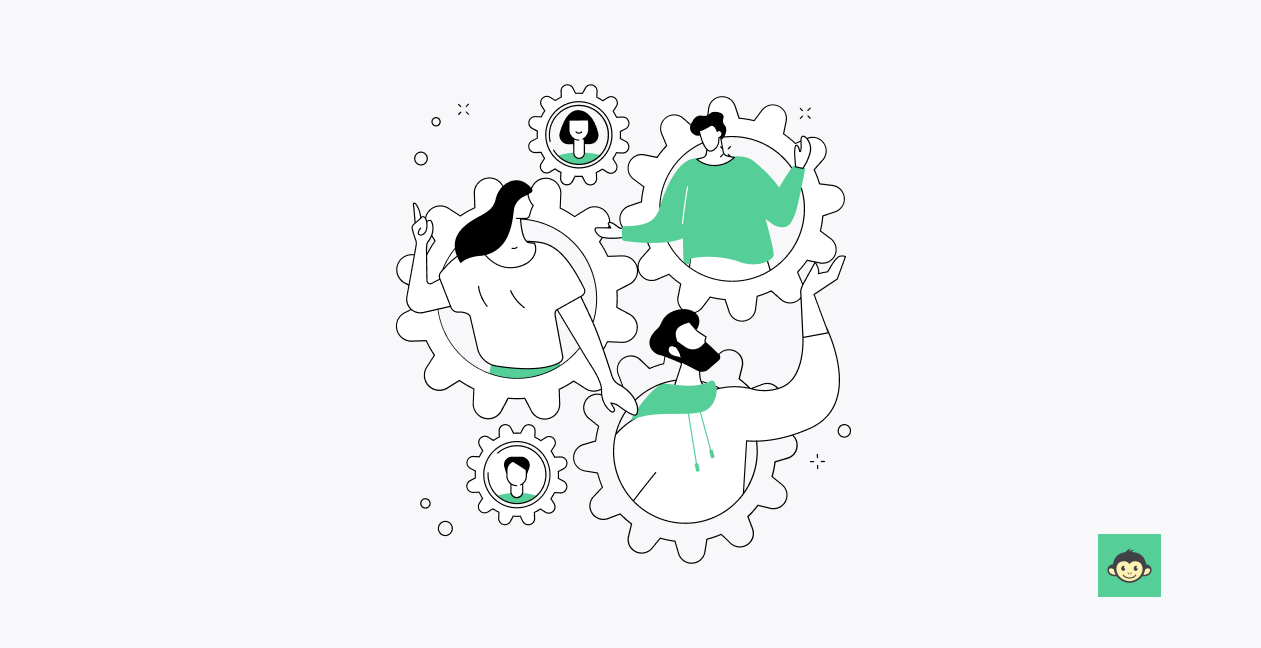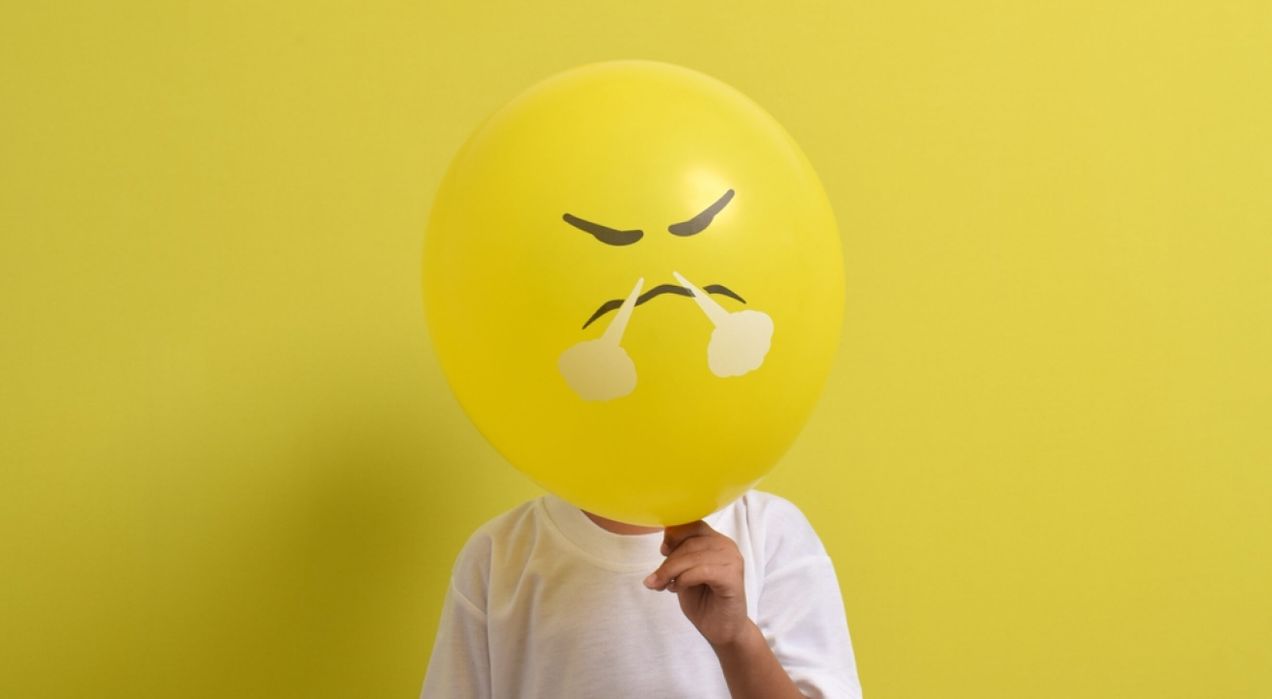What are examples of effective team dynamics?

Picture this: a group of extraordinary individuals, each with their unique set of skills and personalities, coming together to save the world from impending doom. Sounds like a blockbuster Hollywood movie, right?
In the real world, successful team dynamics possess their own superpowers—cohesion, communication, adaptability, and trust, to name a few—that enable them to conquer projects and achieve extraordinary results.
In this blog, we're going to dive headfirst into the world of effective team dynamics. We'll explore real-world examples that will make you feel like a superhero in your own workplace.
So, whether you're a team leader, a project manager, or just someone looking to elevate their teamwork game, buckle up, because we're about to uncover the secrets behind some of the most impressive team dynamics out there.
What are team dynamics?

Team dynamics, are like the secret sauce that makes a group of individuals function like a well-oiled machine. It's the magical blend of personalities, roles, and interactions that can turn an ordinary team into an extraordinary one. So, what exactly are team dynamics, and why should you care?
Imagine a symphony orchestra. Each musician plays a different instrument, and they all have their unique part to play. The conductor, well, conducts. Now, think of this orchestra as your team, and the music they create together as the final product or project you're working on.
The way these musicians work together, synchronize their efforts, and respond to the conductor's cues is a lot like team dynamics.
Team dynamics encompass the behaviors, interactions, and relationships among group members. It's about understanding how individuals with diverse backgrounds, skills, and personalities collaborate to achieve common goals.
How to create great team dynamics?

Creating great team dynamics is like crafting a masterpiece – it takes skill, effort, and a dash of inspiration. Whether you're leading a team structure or just a vital part of one, you have the power to contribute positively to those all-important group vibes.
So, how can you channel your inner maestro and create harmonious team dynamics? Let's dive in!
1. Clear communication: The foundation of success
Imagine playing a game of telephone where messages get distorted with each pass. That's what happens when communication within a team isn't crystal clear. To foster great dynamics, ensure every team member understands their roles, goals, and expectations. Encourage open dialogue, active listening, and provide feedback regularly.
2. Define roles and responsibilities
Ever watched a soccer match where everyone chases the ball without a plan? Chaos, right? The same goes for teams without defined roles. Clearly outline each team member's responsibilities, so they know what's expected of them. This clarity minimizes confusion and helps everyone play their part effectively.
3. Build trust like a pro
Trust is the secret sauce in high performing teams. Think of it as a delicate plant that needs constant care. Be reliable, keep your promises, and support your teammates. When trust blooms, collaboration thrives.
4. Embrace diversity
Different backgrounds and skills make for a stronger unit. Encourage diverse perspectives, and you'll unlock creativity and innovation that can save the day (or at least your project).
5. Conflict resolution skills
Even the best teams experience conflicts. But instead of avoiding them, tackle them head-on. Establish conflict resolution processes that encourage healthy discussions, compromise, and learning from disagreements.
6. Foster team building activities
A little fun can go a long way. Organize team-building activities or outings that help members bond outside the office environment. These experiences can strengthen relationships and create a sense of camaraderie.
7. Be adaptable
The business landscape is ever-changing, like a movie plot twist. Encourage adaptability within your team. Be open to new ideas and ready to pivot when needed.
8. Lead by example
Whether you're the team leader or not, your actions set the tone. Exhibit the qualities you want to see in your team, like punctuality, dedication, and a positive attitude.
Factors influencing team dynamics

Team dynamics can make or break a team's effectiveness, so it's crucial to understand the factors that influence them. Think of these factors as the invisible forces that shape how your team operates. Here are key factors that can have a profound impact:
- Leadership style: The captain of the ship sets the course. A leader's style, whether it's authoritative, democratic, or laissez-faire, can significantly influence how team members talk and collaborate.
- Team size: Size does matter! Smaller teams often find it easier to communicate and make decisions quickly, while larger teams may struggle with coordination.
- Goals and objectives: Your team's purpose is like a guiding star. Clear, well-defined goals help team members stay focused and motivated, fostering positive team dynamics.
- Individual roles: Who does what matters. When roles are undefined or overlapping, it can lead to confusion and conflicts. Ensure everyone knows their part and how it contributes to the bigger picture.
- Diversity: Variety is the spice of life, and it can spice up your team dynamics too. Diverse backgrounds and perspectives can lead to innovative solutions, but they can also create challenges in terms of communication and understanding.
- Trust and respect: Trust takes time to build but can be shattered in an instant. Mutual trust and respect among team members are vital for a healthy dynamic.
- External influences: The external environment, such as market conditions or regulatory changes, can impact how a team operates and responds to challenges.
- Time and experience: Team dynamics often improve with time and experience. As team members get to know each other and work together on various projects, they become a more cohesive team.
- Workload distribution: When workloads are uneven, it can create frustration and resentment. Ensuring tasks are fairly assigned based on skills helps maintain balance and harmony.
- Communication tools: The right tools can streamline collaboration, while inefficient ones can lead to confusion. Use effective, easy-to-navigate tools to keep communication smooth.
How does conflict resolution contribute to effective team dynamics?
Conflict resolution is like the glue that keeps team dynamics from falling apart. When handled correctly, it transforms friction into fuel for stronger collaboration and creativity. Here’s how conflict resolution supercharges team dynamics:
- Encourages open dialogue: Conflict resolution breaks down walls and opens doors to honest communication. When issues are tackled head-on, team members feel heard and valued, creating a culture of transparency. This trust fuels open discussions and stronger connections.
- Promotes mutual respect: A fair conflict resolution process is like a referee in a high-stakes game, ensuring that every voice is respected. By resolving disagreements respectfully, teams show that differing perspectives matter, building a foundation of mutual respect and unity.
- Prevents escalation: Tackling conflicts early is like putting out small fires before they spread. Addressing disagreements quickly keeps minor issues from becoming major disruptions, allowing the team to stay focused and productive without unnecessary drama.
- Strengthens problem-solving skills: Conflicts often bring new challenges, and resolving them sharpens the team’s problem-solving abilities. By engaging in thoughtful discussions and finding common ground, teams grow stronger and more creative in overcoming obstacles.
- Enhances team cohesion: Every resolved conflict is a step toward deeper team unity. Clearing up misunderstandings and aligning on shared goals boosts a sense of belonging, turning individual efforts into a well-coordinated, powerful team dynamic.
The role of leadership in team dynamics

Leadership in good team dynamics is like the conductor of an orchestra – they set the tempo, guide the team performance, and ensure every instrument plays in harmony. So, let's dive into the pivotal role of leadership in shaping the dynamics of a team.
Setting the tone
Leadership style sets the tone for the entire team. An authoritative leader may create a more structured and disciplined environment, while a democratic leader encourages collaboration and open communication. The leadership approach should align with the team's goals and the individual strengths of its members.
Building trust
Trust is the bedrock of effective teamwork, and it's something a leader must cultivate. By demonstrating transparency, consistency, and reliability, a leader can earn the trust and respect of their team. Trusting leaders foster an environment where team members feel safe to express their ideas and concerns.
Communication
A leader's communication skills can make or break team dynamics. Clear and open communication channels create an atmosphere where team members can share ideas, ask questions, and provide feedback. Leaders should not only be good speakers but also attentive listeners, valuing the input of every team member.
Empowerment and delegation
A strong leader knows when to step back and empower team members to take ownership of their tasks. Delegation not only relieves the leader's workload but also empowers team members to develop their skills and contribute to the team's success. Empowering team members can boost their morale and dynamics.
Effective team dynamics examples

Effective team dynamic are like magical synergy that makes the whole greater than the sum of its parts. So, let's dive into some real-world examples of effective team dynamics that'll leave you inspired and ready to supercharge your own team.
The Apollo 11 moon landing team
Remember “That's one small step for man. One giant leap for mankind” when Neil Armstrong set foot on the moon? Behind that historic moment was a team of brilliant minds at NASA. What made this team dynamic truly effective?
Clear roles and collaboration: Each team member had a clearly defined role, from the astronauts to the engineers. They communicated seamlessly and collaborated to solve complex problems in real-time. This unified effort propelled them to achieve what was once thought impossible.
Pixar's creative powerhouse
Pixar is known for creating some of the most beloved animated films of all time. Their success isn't just about animation; it's about the incredible team dynamics that fuel their creativity.
Diverse perspectives: Pixar embraces diversity in all forms, from backgrounds to storytelling styles. They encourage open dialogue, even when it means challenging the status quo. This diversity of thought leads to innovative storytelling and unforgettable characters.
The 1992 U.S. Men's Olympic Basketball "Dream Team"
This dream sports team is the stuff of legends, with basketball icons like Michael Jordan, Magic Johnson, and Larry Bird. But it wasn't just the talent that made them effective.
Shared goal: Their goal was crystal clear: bring home the gold. Ego took a back seat to team success. They trusted each other's skills and played together harmoniously, showcasing the power of a shared objective in fostering teamwork.
The Emergency Room (ER) team
In a fast-paced, high-pressure environment like an ER, effective team dynamics are a matter of life and death.
Clear communication and quick decision-making: ER teams rely on clear communication and rapid decision-making. Each team member knows their role and can make split-second decisions. This dynamic ensures that patients receive the best care possible in critical situations.
The Apple design team
Apple’s design team, led by the legendary Jony Ive, revolutionized the way we think about technology with products like the iPhone and MacBook. What powered this innovation?
Collaborative creativity: Apple's design team fostered an environment where every idea was welcome, no matter how unconventional. By combining aesthetics with functionality, they worked together to create products that not only worked seamlessly but also looked beautiful.
The International Space Station team
Operating in space requires flawless team dynamics, and the multinational team aboard the International Space Station is a shining example of that.
Cross-cultural collaboration: Scientists and astronauts from various countries come together to live and work on the International Space Station, relying on each other's expertise and respecting cultural differences. This effective collaboration has allowed them to conduct groundbreaking research while ensuring the safety of everyone on board.
So, what can we learn from these remarkable examples of effective team dynamics? It all boils down to a few key principles:
- Clear communication: In every successful team, communication is king. Whether it's discussing a lunar landing or crafting a hit song, effective teams communicate openly and often.
- Shared team goals: A common purpose unites a team. When everyone is working toward the same objective, it fosters a sense of unity and collective motivation.
- Diversity: Embrace diverse perspectives and skills. Different viewpoints and talents can lead to innovative solutions and unique creations.
- Trust: Trust is the glue that holds a team together. Trust in your teammates' abilities and intentions is essential for a harmonious and effective team dynamic.
- Collaboration: True teamwork involves working together, not in isolation. Collaboration encourages the sharing of ideas and the pooling of strengths.
- Roles and responsibilities: Clearly defined roles and responsibilities ensure that everyone knows what's expected of them and how they contribute to the team's success.
- Adaptability: The ability to adapt to changing circumstances and challenges is a hallmark of effective team dynamics. Be flexible and open to new approaches when necessary.
Examples of bad team dynamics in the workplace

Poor team dynamics in the workplace can be like a storm brewing on the horizon, threatening to wreak havoc on your productivity, morale, and job satisfaction. Let's take a look at some fictional examples that illustrate what to avoid:
The lone ranger syndrome
Imagine a team where one member, let's call them John, prefers to work independently, rarely communicates with others, and hoards information. John's solo efforts often lead to duplicating work, missed deadlines, and frustration among the team.
Lesson: Ineffective communication and collaboration can be detrimental to group dynamics. Encourage open sharing of information and tasks to avoid the Lone Ranger Syndrome.
The overbearing overlord
In this scenario, the team leader, we'll call her Sarah, dominates every discussion, dismisses others' ideas, and micromanages every aspect of the project. Team members feel disempowered and demoralized, stifling their creativity and enthusiasm.
Lesson: Overbearing leaders can stifle team creativity and autonomy. Effective leaders should provide guidance and support while allowing team members room to contribute and grow.
The silent treatment
Imagine a team where no one speaks up during meetings, and decisions are made without any meaningful discussion. Everyone is afraid to express their opinions due to fear of conflict or repercussions. The team operates in a perpetual state of silence.
Lesson: A lack of open communication can lead to poor decision-making and missed opportunities. Encourage team members to voice their thoughts and concerns to promote a healthy exchange of ideas.
The blame game
In this scenario, whenever something goes wrong, the team members engage in a never-ending blame game. Rather than taking responsibility for their collective actions, they point fingers at each other, eroding trust and morale.
Lesson: A culture of blame can poison team dynamics. Encourage accountability and focus on finding solutions rather than assigning blame when issues arise.
The clique culture
Imagine a team where a few members form an exclusive group, leaving others out of important discussions and decisions. This creates divisions, with those outside the clique feeling isolated and undervalued, leading to resentment and disengagement.
Lesson: Clique culture erodes inclusivity and teamwork. Promote a culture of openness and ensure all team members are included in discussions and decision-making processes.
The passive participant
In this scenario, a team member, let's call him Dave, shows up to meetings but rarely contributes ideas or feedback. His lack of engagement frustrates others who feel the burden of responsibility while Dave takes a back seat.
Lesson: Passive participation can hinder team performance and progress. Encourage every team member to contribute and share their perspectives to ensure balanced involvement and better outcomes.
What tools are out there to assist in improving team dynamics?

Improving team dynamics is like fine-tuning a well-oiled machine. To help you on this journey, there are several handy tools and resources available that can make a significant difference in fostering a harmonious and productive team environment.
Employee engagement survey tool
Understanding how your team members feel about their work and the workplace is essential for improving team dynamics. Employee engagement survey tools like CultureMonkey allow you to create and distribute surveys that capture valuable feedback from your team.
These surveys can uncover insights into areas that need improvement, such as communication, leadership, or work-life balance. By addressing these concerns, you can boost morale and team cohesion.
Collaboration software development team
Tools like Slack, Microsoft Teams, or Trello provide a virtual space for team members to collaborate seamlessly. They allow for real-time communication, file sharing, project management, and task assignment.
By centralizing team interactions and project management, these tools help streamline workflows and enhance team coordination.
Personality assessment tools
Understanding the personality traits of team members can greatly improve team dynamics. Tools like Myers-Briggs Type Indicator (MBTI) or the Big Five Personality Traits assessment can help identify individual strengths, communication styles, and preferences.
This knowledge enables team members to work together more effectively by leveraging each other's strengths and accommodating differences.
Conflict resolution tools
Conflict is a natural part of team dynamics, but it's essential to address it constructively. Conflict resolution tools like Harvard Negotiation Project offer frameworks and techniques to manage conflicts within the team. These tools help teams navigate disagreements and reach mutually beneficial solutions, preventing conflicts from festering and negatively impacting team dynamics.
Team building activities and workshops
Sometimes, the best tools for improving team dynamics don't come in the form of software. Team building activities and workshops, facilitated by experts or through resources like Team Bonding or Drum Café, can help team members build trust, enhance communication, and strengthen their bonds.
These activities provide opportunities for team members to work together in a different context, fostering camaraderie and a sense of unity.
What are the challenges in maintaining effective team dynamics?

Have you ever tried to juggle? Not just one ball, but multiple balls, plates, and maybe even flaming torches? Maintaining effective team dynamics can sometimes feel like that, a delicate balancing act that comes with its share of challenges.
1. Communication breakdown
Ever played a game of "telephone" as a kid? You whisper a message, and it goes around the circle, often coming out hilariously different at the end. In the workplace, miscommunication can be far from funny. It's one of the most common challenges in team dynamics.
Overcome it: Promote clear, open, and frequent communication. Encourage team members to ask questions, seek clarification, and provide feedback. Use tools like instant messaging, project management software, or regular team meetings to keep everyone in the loop.
2. Lack of trust
Trust is the glue that holds a team together. When trust is absent, team dynamics can crumble faster than a sandcastle in a rainstorm. Suspicion, second-guessing, and a lack of transparency can all erode trust.
Overcome it: Foster trust by leading by example. Be transparent, keep promises, and trust your team members to deliver on their commitments. Encourage a culture of honesty and vulnerability where team members feel safe sharing their thoughts and concerns.
3. Conflict and Misunderstandings
Conflict can be healthy when handled constructively, but if left unattended, it can fester and poison team dynamics. Misunderstandings and unresolved disputes can create tension and division within the team.
Overcome it: Address conflicts promptly and professionally. Encourage open and respectful discussions to resolve differences. Consider using conflict resolution techniques or involving a neutral mediator when necessary.
4. Changing team dynamics
Teams are dynamic entities, and they evolve over time. New members join, others leave, roles shift, and projects change. These shifts can disrupt established team dynamics.
Overcome it: Embrace change as an opportunity for growth. Acknowledge the adjustments and communicate openly about how they might impact the team. Provide support and guidance to help team members adapt to these changes smoothly.
5. Poor leadership
Leaders play a pivotal role in team dynamics. Ineffective leadership can lead to confusion, disengagement, and frustration among team members. Leaders who micromanage, lack transparency, or fail to provide guidance can hinder team dynamics.
Overcome it: Invest in leadership development. Ensure that team leaders possess the necessary skills and qualities to lead effectively. Encourage leadership styles that empower and support team members rather than stifling them.
6. Unequal participation
In some teams, a few members might dominate discussions and decision-making, while others remain silent. This can lead to feelings of exclusion and disengagement.
Overcome it: Create an inclusive environment where every team member feels valued and heard. Encourage quieter team members to speak up and actively involve them in discussions and decision-making processes.
7. Lack of clarity and direction
Teams without clear goals and a sense of purpose can easily lose their way. When team members don't understand their roles or the team's objectives, it can lead to confusion and frustration.
Overcome it: Define clear goals, roles, and responsibilities from the outset. Keep the team focused on its mission and regularly revisit goals to ensure alignment. Provide regular feedback and recognition to keep team members motivated and on track.
Conclusion
In the quest to achieve effective team dynamics, we've journeyed through inspiring examples, from the collaborative spirit of the Apollo 11 team to Pixar's creative powerhouse. These success stories underscore the importance of clear communication, trust, diversity, shared goals, and a commitment to teamwork.
But here's the icing on the cake: CultureMonkey's employee engagement survey platform. When it comes to nurturing positive team dynamics, understanding your team's needs and sentiments is the first step.
With CultureMonkey’s user-friendly interface and customizable surveys, you can dive deep into your team's thoughts, concerns, and aspirations.
After all, the best way to achieve greatness is by knowing where you stand and having the right tools to make the journey smoother.
FAQs
What are examples of effective team dynamics in the workplace?
Effective team dynamics include clear communication, active listening, mutual respect, and collaboration. When team members trust each other, share ideas openly, and leverage their diverse strengths, it leads to better problem-solving and innovation. Additionally, teams that establish clear goals, roles, and responsibilities can maintain focus and work cohesively toward achieving their objectives.
How do effective team dynamics contribute to project success?
Effective team dynamics are pivotal for project success. They ensure efficient coordination, minimize conflicts, and enhance productivity. When team members work well together, they can leverage their collective skills, meet deadlines, and adapt to challenges more effectively. This synergy ultimately leads to successful project outcomes.
Can you provide real-life examples of successful team dynamics?
In successful team dynamics, you often see instances where team members actively listen to each other, openly share ideas, and collaboratively solve problems. Teams that support one another, distribute tasks effectively, and communicate clearly demonstrate effective dynamics. For example, a medical team coordinating during a critical surgery showcases the importance of trust, communication, and defined roles.
What are the key elements of productive team dynamics?
Productive team dynamics encompass elements like effective communication, trust, shared goals, and mutual accountability. These dynamics foster a sense of belonging, where each member feels valued and motivated to contribute their best. Furthermore, constructive feedback and conflict resolution skills are vital for maintaining a harmonious and efficient team environment.
How can I improve team dynamics in my organization?
Improving team dynamics involves fostering open communication, team-building activities, and creating a culture of trust and respect. Encourage team members to voice their opinions, provide constructive feedback, and actively listen to others. Invest in team-building exercises to strengthen relationships, and ensure roles and responsibilities are well-defined. Regularly review and address conflicts to maintain a positive team atmosphere.
What does effective team dynamics mean?
Effective team dynamics refer to the harmonious interactions, behaviors, and relationships within a team that allow members to collaborate efficiently. It’s when team members communicate openly, trust each other, and work toward shared goals. In an effective dynamic, everyone understands their role, values diverse perspectives, and contributes to problem-solving. This synergy enhances the team's ability to innovate and achieve success together.



